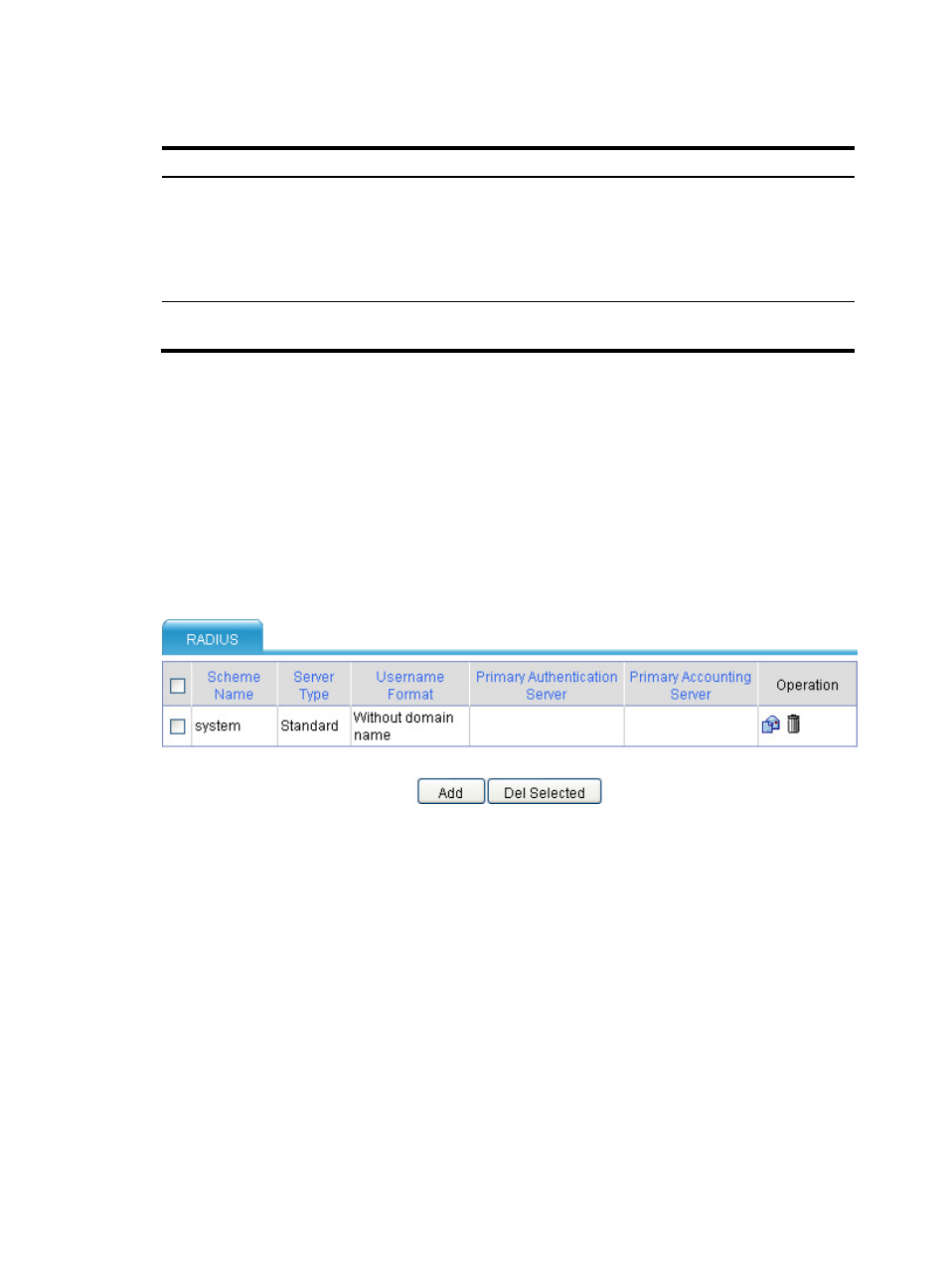Configuring radius schemes in the web interface – H3C Technologies H3C SecPath F1000-E User Manual
Page 179

169
Displaying and maintaining local users and local user groups
Task Command
Remarks
Display local user information.
display local-user [ idle-cut { disable | enable }
| service-type { dvpn | ftp | portal | ppp | ssh
| telnet | terminal | web } | state { active |
block } | user-name user-name | vlan vlan-id ]
[ | { begin | exclude | include }
regular-expression ]
Available in any view.
In FIPS mode, the firewall
does not support ftp and
telnet keywords.
Display the user group
configuration information.
display user-group [ group-name ] [ | { begin |
exclude | include } regular-expression ]
Available in any view.
Configuring RADIUS schemes in the Web interface
A RADIUS scheme defines a set of parameters that the firewall uses to exchange information with the
RADIUS servers. There might be authentication servers and accounting servers, or primary servers and
secondary servers. The parameters mainly include the IP addresses of the servers, the shared keys, and
the RADIUS server type. By default, no RADIUS scheme exists.
To configure a RADIUS scheme in the Web interface:
1.
Select User > RADIUS from the navigation tree to enter the RADIUS scheme list page.
Figure 138 RADIUS scheme list
2.
Click Add to enter the RADIUS scheme configuration page.